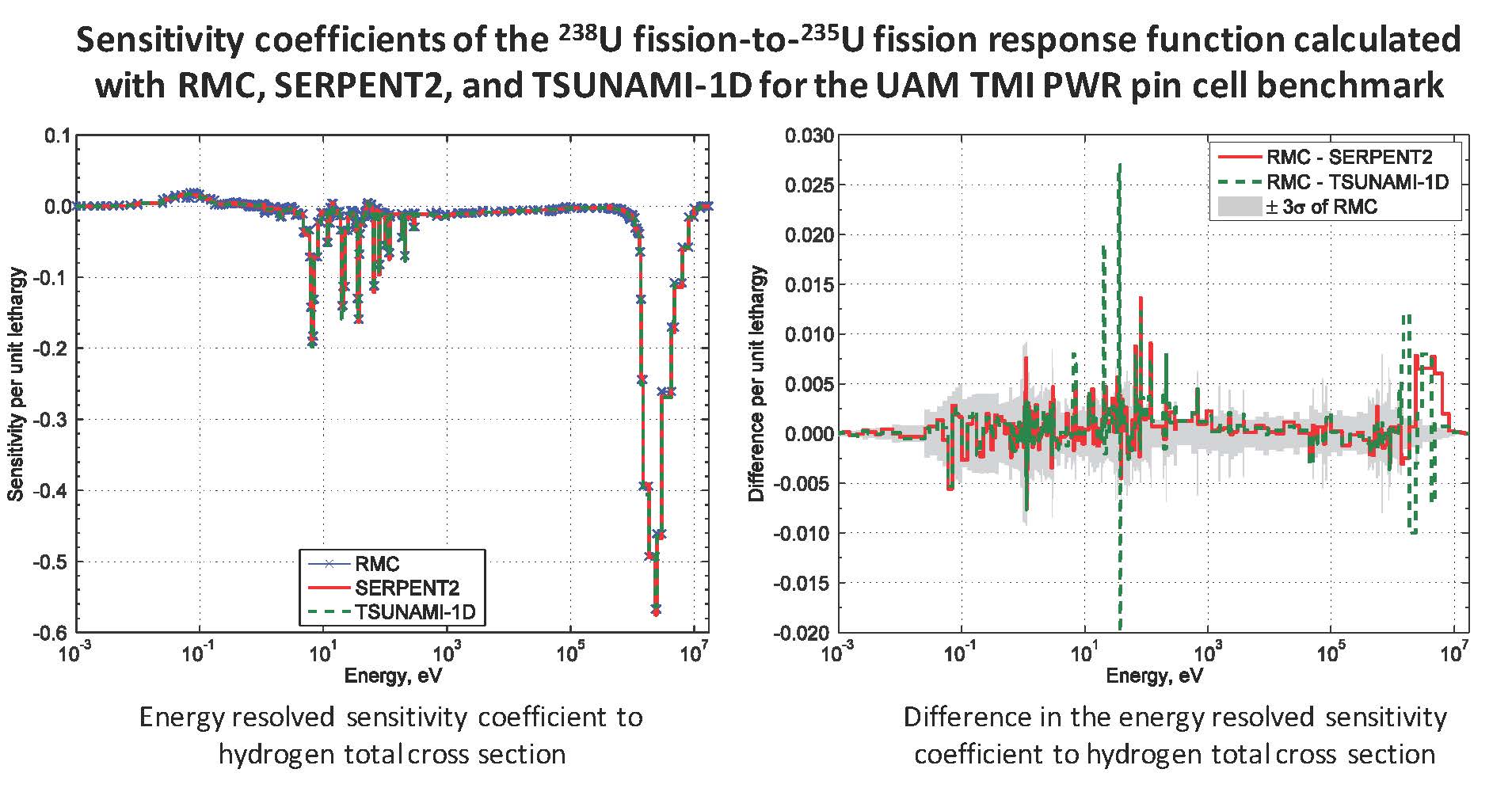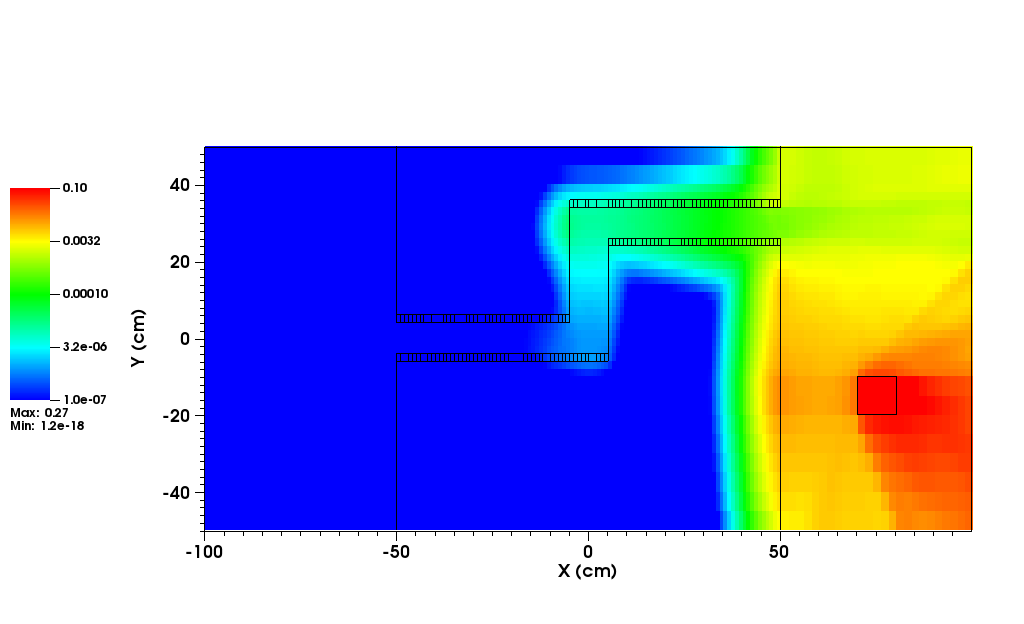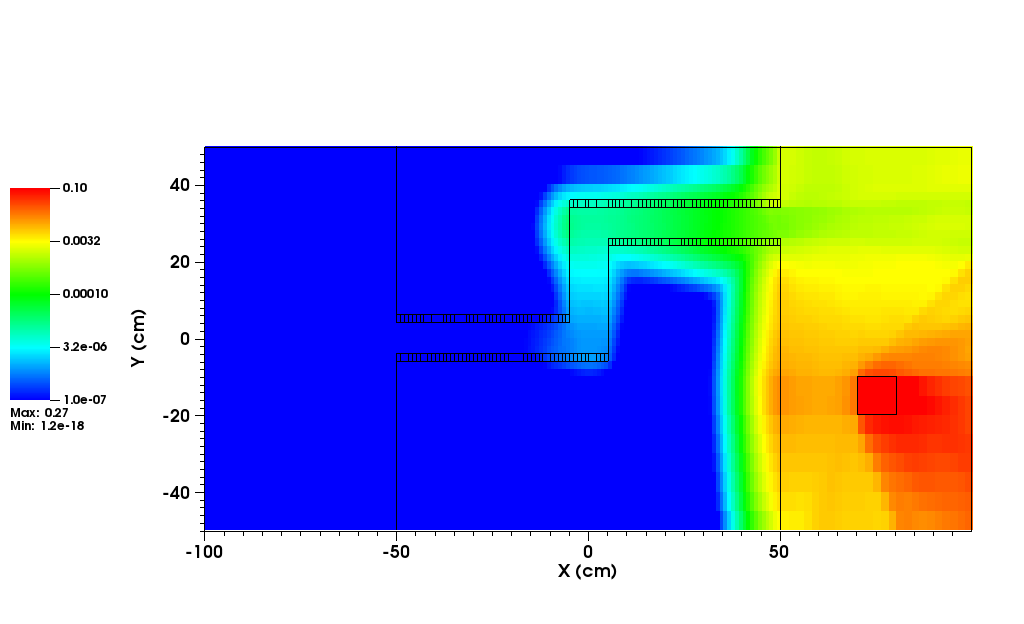Title
A nonstiff solution for the stochastic neutron point kinetics equations
Author(s)
Milena Wollmann da Silva, Richard Vasques, Bardo E.J. Bodmann, Marco T. Vilhena
Publication
Annals of Nuclear Energy 97: 47-52
Description
We propose an approach to solve the stochastic neutron point kinetics equations using an adaptation of the diagonalization-decomposition method (DDM). This new approach (Double-DDM) yields a nonstiff solution for the stochastic formulation, allowing the calculation of the neutron and precursor densities at any time of interest without the need of using progressive time steps. We use Double-DDM to compute results for stochastic problems with constant, linear, and sinusoidal reactivities. We show that these results strongly agree with those obtained by other approaches established in the literature. We also compute and analyze the first four statistical moments of the solutions.


 Hybrid methods for radiation transport aim to use the speed and uniform uncertainty distribution obtained from deterministic transport to accelerate and improve performance in Monte Carlo transport. An effective use of this type of transport hybridization can lead to a reduced uncertainty in the solution and/or a faster time to a solution. However, not all hybrid methods work for all types of radiation transport problems. In problems where the method is not well-suited for the problem physics, a hybrid method may perform more poorly than analog Monte Carlo, leading to wasted computer time and energy, or even no acceptable solution.
Hybrid methods for radiation transport aim to use the speed and uniform uncertainty distribution obtained from deterministic transport to accelerate and improve performance in Monte Carlo transport. An effective use of this type of transport hybridization can lead to a reduced uncertainty in the solution and/or a faster time to a solution. However, not all hybrid methods work for all types of radiation transport problems. In problems where the method is not well-suited for the problem physics, a hybrid method may perform more poorly than analog Monte Carlo, leading to wasted computer time and energy, or even no acceptable solution.